Religious genre Kingdom of Prussia 19th century
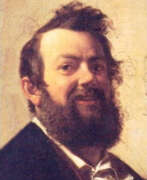

Johann Peter Hasenclever was a German painter of the first half of the 19th century. He is known as a painter, a representative of the Düsseldorf school of art, who is considered one of the founders of German genre painting.
Hasenclever began his work by interpreting biblical, mythological and romantic subjects, but eventually found his calling in humorous scenes from bourgeois life, especially Pyrenean towns and cities. Among his famous works are "The Amusing Examination," "The Reading Room," and "The Trial of Wine," distributed in engravings and lithographs.
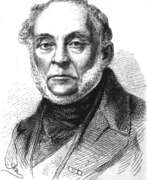

Carl Friedrich August von Kloeber was a German painter of the first half of the 19th century. He is known as a painter and teacher, a member of the Berlin Academy of Arts.
August Kloeber preferred to use motifs from mythology in his works, which distinguished him from many German artists of the time. He also created paintings on religious and historical subjects. He also painted portraits, and his models included members of Beethoven's family. Kloeber received commissions from the Prussian royal family and worked on the painting of castles, churches, and other sites. He also designed porcelain, jewelry, and medals.
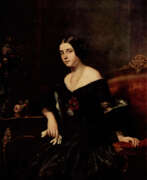

Gustav Karl Ludwig Richter was a German painter of the mid-nineteenth century. He is known as a historical painter and portraitist.
Gustav Richter created his first significant work, The Resurrection of Jairus' Daughter, in 1856. This painting was a great success, as it was one of the first attempts to realistically interpret biblical subjects. In the same year, the artist presented to the public the first portrait of his work, which immediately brought him a reputation as a talented portraitist. His best portraits were dedicated to Sultan Abdul-Mejid, the Duchess of Edinburgh, Emperor William I, Empress Augusta and Queen Louise. In his works, in addition to portraits, Richter concentrated on depicting individual figures. Among his famous works in this genre are "Egyptian Woman", "Odalisque" and "Crimean Gypsy Woman".
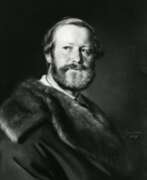

Karl Ludwig Rosenfelder was a German painter of the mid-nineteenth century. He is known as a painter, graphic artist, educator, and philosopher.
Rosenfelder specialized in religious and historical paintings, including large-scale paintings of medieval subjects. He also participated in the creation of wall paintings at the University of Königsberg, which earned him an honorary doctorate.
Rosenfelder was one of the founders of the Association of Berlin Artists in 1841, and in 1845 he became the founder and director of the Königsberg Art Academy, a position he held until 1874.
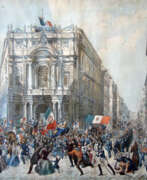

Franz Wenzel Schwarz was a German-Bohemian painter of the second half of the nineteenth and early twentieth centuries. He is known as a portrait painter, master of historical genre and glass artist.
Schwarz created many portraits of churchmen, scholars, high officials, major businessmen, as well as children and women. He also created many religious paintings and stained glass windows for churches. He was a member of the Society of Artists of Vienna and other artistic associations. In the later part of his career, Schwarz concentrated on creating genre and portrait paintings, selling them to various countries, including America and Russia. Between 1912 and 1918, he copied paintings from the Old Masters Picture Gallery in Dresden.
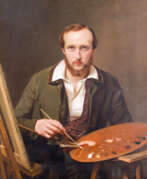

Felix Schadow was a German painter of the mid-nineteenth century. He is known as a portrait painter and genre painter, the son of the sculptor Johann Gottfried Schadow and half-brother of the painter Friedrich Wilhelm von Schadow.
Felix Schadow studied in Dresden, where he created his first known painting, Christ and Mary and Martha. After his father's death in 1850, he decorated the walls of his studio in his parents' reconstructed home with a cycle of frescoes depicting his father's life. The master's famous works include paintings such as "Joseph and his brothers reunited in Egypt," "The Engagement of Mary and Joseph," and "The Family Before the Burning Ruins."
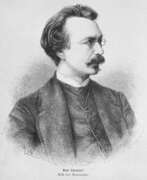

Paul Thumann was a German painter of the second half of the nineteenth and early twentieth centuries. He is known as a portrait painter and book illustrator.
Paul Thumann created drawings that decorated the works of famous authors such as Goethe, Tennyson, Chamisso, Gamerling and Heine. According to critics, his illustrations were characterized by elegance and subtlety of lines, expressiveness of human and poetic images. Stylistically, the master's works approached Art Nouveau, popular at the turn of the XIX-XX centuries. Thumann also created paintings on historical, religious and mythological themes.


Philipp Veit was a German painter of the 19th century. He is known as a painter and draughtsman, a representative of Romanticism, a member of the Nazarene group and is considered one of the best colorists among the representatives of this movement. His merits include the fact that he revived the almost forgotten technique of fresco painting.
Veit in his works sought to reflect the ethical and artistic ideals of the German and Italian Renaissance. He actively used the language of medieval symbols, advocating the revival of religious art. His works were distinguished by elaborate composition, monumental images, elegant drawing and contrasting color combinations. In his later works, the artist, influenced by French painting, switched to a more restrained palette.
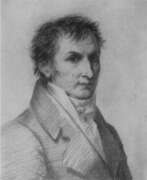

Johann Peter von Langer was a German painter of the last quarter of the eighteenth and first quarter of the nineteenth centuries. He is known as an academic painter, draughtsman and printmaker, as well as a teacher.
Von Langer painted religious and historical paintings and portraits, as well as graphic illustrations. Many of his drawings and engravings are preserved in the State Graphic Collection in Munich. Langer was the director of the Academy of Fine Arts in Munich. In 1808 he received the title of Bavarian nobility. The master's contribution to art was also recognized in the Netherlands, where he was accepted as a member of the Royal Academy.
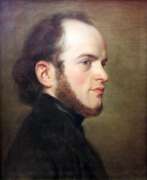

Adolph Friedrich Erdmann von Menzel was a German Realist artist noted for drawings, etchings, and paintings. Along with Caspar David Friedrich, he is considered one of the two most prominent German painters of the 19th century, and was the most successful artist of his era in Germany. First known as Adolph Menzel, he was knighted in 1898 and changed his name to Adolph von Menzel.
His popularity in his native country, owing especially to his history paintings, was such that few of his major paintings left Germany, as many were quickly acquired by museums in Berlin. Menzel's graphic work (and especially his drawings) were more widely disseminated; these, along with informal paintings not initially intended for display, have largely accounted for his posthumous reputation.


Friedrich Georg Weitsch was a German painter of the late 18th and early 19th centuries. He is known as a painter and printmaker.
Weitsch created landscapes, historical and religious subjects, but a special place in his work was occupied by portraits of aristocrats, as well as ordinary people. His works are in various museums, including the Braunschweig City Museum, the Braunschweig Land Museum, and the Duke Anton Ulrich Museum of Braunschweig-Wolfenbüttel.